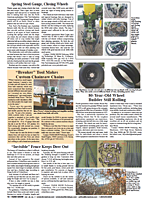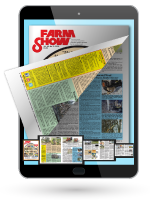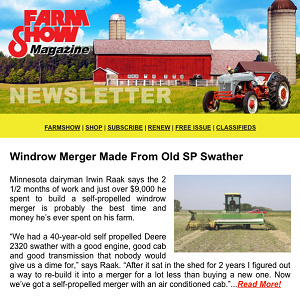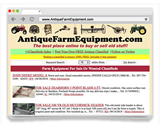2025 - Volume #49, Issue #4, Page #26
[ Sample Stories From This Issue | List of All Stories In This Issue | Print this story
| Read this issue]
Aerial Image Company Introduces Nano Tractor
 |
“We use drones and other aerial images to build a map and create field boundaries,” says Jessie Klein, BOPA. “Once that’s set up, we use the ANT to do work. At this point, we’re focusing on using it for precision weed control. One ANT can do the work of a 10-person weeding crew or easily tow an F-150 truck.”
Klein explains that the ANT can be used solo in a field or as part of a fleet.
“They’re swarm-ready,” she says. “The idea is to have several working in a field, so if one goes down, the others can continue working.”
Now in its second generation, the ANT is a 4-WD, zero-radius turning, battery-powered mini workhorse. The body is 3 ft. wide by 5 ft. long and stands 30 in. tall. It weighs about 250 lbs., including the 40-lb. battery. Arms on the four-wheel posts pivot at the body with electric actuators, giving the ANT a track width of 14 to 44 in. Standard wheels provide up to a 20-in. clearance. Brackets on the body allow the arms to be mounted lower if desired.
The ANT also uses electric actuators on the rear to raise and lower a toolbar with a linear rail. Tools such as sweeps of various types can be mounted to the rail, positioned to the left or right, and then held in position for autonomous cultivation. Depth can be adjusted with the toolbar actuators.
Equipped with an onboard camera and computer vision, the ANT can carry out in-row precision cultivation.
“We’ve developed a proprietary AI system to identify weeds in a particular crop, such as a vine in sugar beets,” explains Klein.
The ANT’s precision weeding tool is reminiscent of an extrusion blender. A multi-element head that spins at 20,000 rpm is mounted to an electric motor, which in turn is mounted to an arm attached to the toolbar. Operating in tandem with the computer vision, it can move in and out of the row to remove weeds, while leaving the crop untouched. It can also be raised above or lowered into the soil.
“It can take out a 1-in. weed stalk without a problem,” says Klein. “It can go deep into the soil or be used at the surface in no-till fields.”
The current version of the ANT comes equipped with a 40-lb. battery that can be recharged in 2 1/2 hrs. with a fast charger or 6 hrs. with solar power. An 80-lb. battery is available for longer run times.
At a mid-June field day, BOPA co-founder Sarah Hinkley described how the ANT is being used.
“Equipped with the 40-lb. battery, it can mechanically cultivate for 16 hrs. or tow a 6,000-lb. load for 24 hrs.,” she says. “Equipped for precision in-row cultivation, it has a 6-hr. run time.”
The ANT has a top speed of 5 mph when moving around the field, towing a trailer or in light cultivation. Hinkley notes that the precision cultivation unit’s speed slows based on plant density.
“It can cover 4 to 6 acres a day in light to mid-density plants when focused on the smart zone area (crop row width),” she says. “In high density, that can drop to 3 acres per day.”
BOPA is field-testing the ANT on farms, working in fields of carrots, black-eyed peas, sweet potatoes, watermelons, pumpkins and more. In some cases, it’s doing much more than simple cultivation or even precision weed removal.
“Participating farmers are developing their own tools to use with the ANT, including a carrot harvester attached to the linear actuators,” says Hinkley. “We adjust our software to work with them.”
She notes that the design of the ANT makes it easy to mount e-mowers, edgers and other tools. BOPA is also developing its own attachments.
“We hope to get a triple-row boom developed by 2026,” says Hinkley. “It’ll have one section mounted to the actuators on the rear and two pop-out side booms with guide wheels.”
To introduce the ANT to farmers, the company will bring in a fleet for a field demonstration for $55 to $60 per acre.
ANTs are available directly from BOPA at $17,000 to $25,000. The $17,000 base is for simple autonomous or remote-control work, such as towing or cultivation. The price increases with the addition of a camera and computer vision. Other options include larger wheels for more clearance. Alternative length linear rails are also available for wider crops.
Contact: FARM SHOW Followup, Barn Owl Precision Ag, 220 Santa Fe Ave., La Junta, Colo. 81050 (info@barnowlag.com; www.barnowlag.com).

Click here to download page story appeared in.

Click here to read entire issue
To read the rest of this story, download this issue below or click here to register with your account number.




